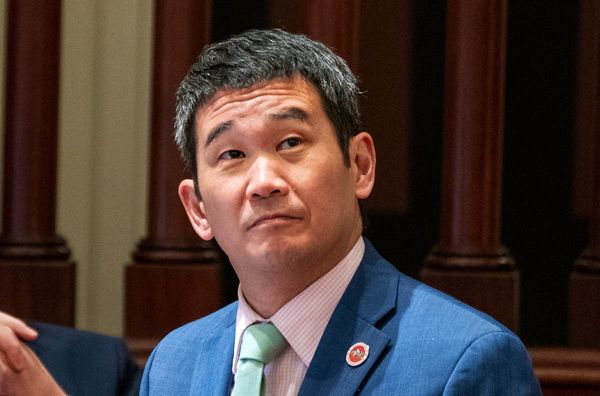






Experiments on mice in "cruel" smoking towers at the University of Newcastle should never be allowed to happen again, NSW MP Emma Hurst says.
The experiments were done to investigate chronic obstructive pulmonary disease [COPD] and other diseases associated with cigarette smoking. This includes cardiovascular disease.
"These horrific experiments give a glimpse of what is happening behind closed doors in animal research in NSW," said Ms Hurst, of the
.
Ms Hurst's comments come ahead of the final report, due for release on Friday, of a NSW parliamentary inquiry into the "use of primates and other animals in medical research in NSW".
The University of Newcastle told the inquiry it had no further plans to use the controversial smoking towers.
Ms Hurst said she was relieved to hear during the inquiry that the university had "voluntarily stopped these experiments".
However, she was furious that "these shocking experiments still remain legal in NSW". "These experiments are cruel and unnecessary. They must be outlawed immediately."
University of Newcastle Professor Zee Upton, Deputy Vice-Chancellor Research and Innovation, said in a statement to the Herald: "All research activities conducted at the university that involved the inhalation device have been completed".
"As a result, the university decommissioned the inhalation equipment in July 2022. This research was always about increasing our understanding of how respiratory illness develops, so we can find better treatments for patients. Our studies have contributed to that goal.
"We have a long history of health and medical research achievements and, as we strive to deliver more medical breakthroughs, our university remains committed to the ethical treatment of animals in our care."
Documents from the NSW Department of Primary Industries Animal Research Review Panel, uncovered by the Animal Justice Party in a call for papers, revealed that the University of Newcastle used an average of 1410 mice a year in smoke inhalation projects from 2018 to 2020.
The university said in a statement to the inquiry that 91 lab mice died in smoking experiments from 2018 to 2021, with no deaths reported this year.
"Some are due to asphyxia as a result of the mice turning in the tubes. Some post-mortems are inconclusive," the university stated.
Mice used in smoking towers would suffer "acute pain, distress and nicotine withdrawal", a panel review found. After a 1.5-hour procedure, mice were observed "staggering and shaking".
The mice are bred for medical research.
The university stated in one of the documents that "mice are weaned onto the machine and may start with six cigarettes twice daily".
They gradually move up to "12 cigarettes twice daily over the first week".
"A run of 12 cigarettes takes approximately an hour. Smoke is delivered twice daily for five days, then rested for two days. Smoking protocols may run 8, 10 or 12 weeks."
Ms Hurst said the experiments involved mice being "forced into tiny plastic tubes where cigarette smoke is pumped directly into their nostrils".
"Imagine having your body repeatedly experimented on - having cigarette smoke forced into your nostrils twice a day and then having two days of withdrawals every weekend," she said.
Humane Research Australia CEO Rachel Smith called in July for the University of Newcastle to "take the final step and publicly commit to a permanent ban of forced smoke inhalation research on animals".
"This type of research does not align with a modern and forward-thinking university," Ms Smith said.
University of Newcastle Pro Vice-Chancellor for Research Brian Kelly said in a written statement to the inquiry in July that: "Our Animal Care and Ethics Committee has not received any new ethics applications that proposed the use of the device. As a result, the university has decommissioned the instrument, and it is no longer operational."
He said no laboratory mice had been exposed to the inhalation device since October 2021.
The University of Wollongong's Animal Ethics Committee was quoted in one document as reaching a "firm conclusion" that it would not approve nose-only smoking towers.
It found the procedure would have "significantly greater animal welfare impact because of the stress caused by restraint, the potential for hypothermia, the enforced social isolation during exposure and the risk of physical injury".
It would not meet the Australian Code for the Care and Use of Animals for Scientific Purposes, given the availability of an "alternative procedure with significantly lower animal welfare impact".
In the alternative method, mice are exposed to smoke in a chamber that is large enough for them to move freely and may allow access to food and water.
An updated Animal Research Review Panel guideline for smoke inhalation procedures in rodents, issued in July, stated that "similar endpoints can be produced using both approaches".
The goal of the procedures is to reproduce chronic obstructive pulmonary disease. The main difference between the two procedures was that nose-only exposure "increases the severity of changes and requires slightly shorter timeframes".
The guideline said there had been "significant development in sophisticated methods" with non-animal alternatives for respiratory disease research.
It added that advances in understanding COPD and other diseases had been made "with the use of smoke inhalation procedures in rodent models".
"However, the nature of the experiments has generated significant public concern and scrutiny, with the expectation that the value of the research must be demonstrated if it is to be approved."
Ms Hurst said the NSW government had allowed "cruel experiments" on animals for too long, with "a total lack of transparency in an effort to avoid public scrutiny and criticism".
"New experimental methods are now producing more dependable and accurate results than research conducted on non-human animals."
She said the NSW government should be "investing in humane alternatives instead of allowing experiments like the gruesome ones that had been conducted at the University of Newcastle for many years".
"These machines should be turned into scrap to ensure they aren't used to cause one more animal to suffer."
In its updated guidelines, the panel recommended that use of the nose-only procedure "be approved by exception only".
Researchers must justify why the procedure should be used instead of alternative methods, "noting that a shorter timeframe using the nose-only method is not a reasonable justification".
WHAT DO YOU THINK? We've made it a whole lot easier for you to have your say. Our new comment platform requires only one log-in to access articles and to join the discussion on the Newcastle Herald website. Find out how to register so you can enjoy civil, friendly and engaging discussions. Sign up for a subscription here.







